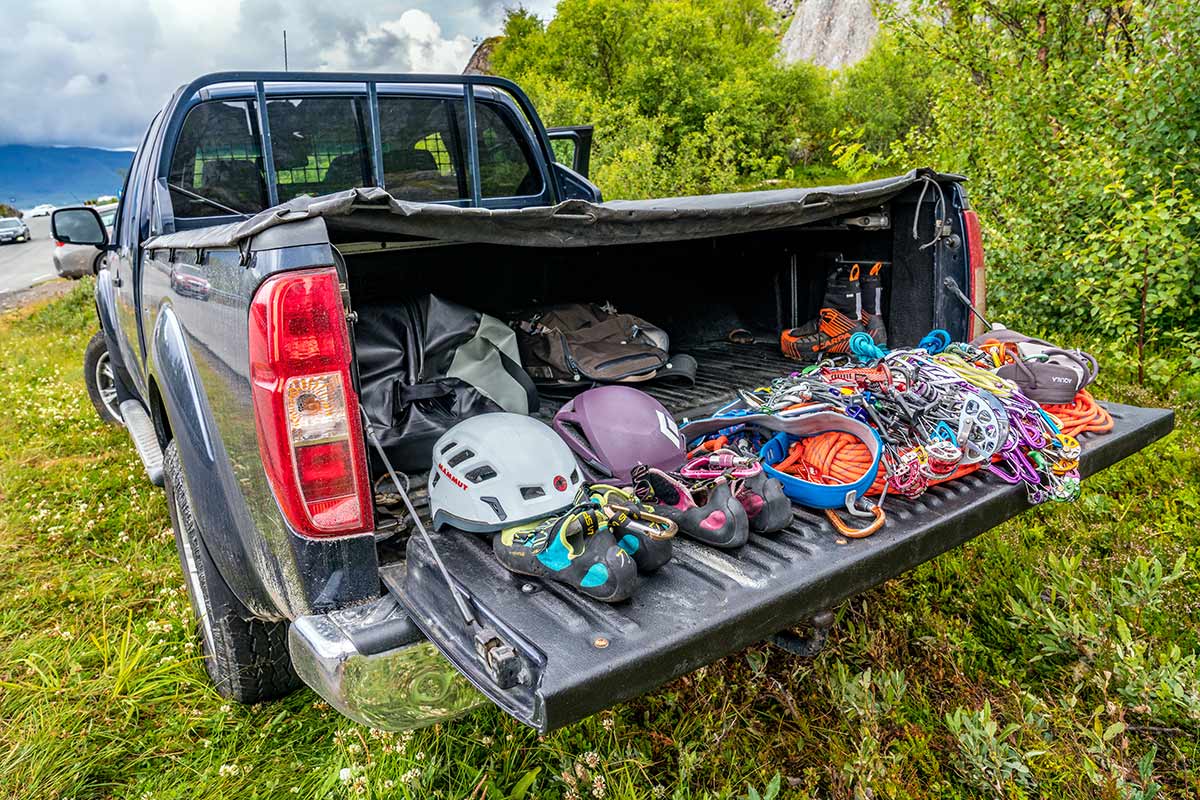The UIAA – International Climbing and Mountaineering Federation – regularly receives questions related to safety topics. The UIAA Safety Commission, with support of other UIAA Commissions and experts, recently commenced a series of articles answering common questions with the objective of making them available to the wider climbing community.
This month’s question is: Can half ropes be used as a single or twin rope?
Further context to the question submitted – Based on the assumption that each strand in a half rope system will share some portion of the impact, half ropes must withstand at least five falls with a 55kg mass on one strand. My problem is that if climbing with two half ropes there is no such a thing as simultaneous clipping of two anchors. So, as the leader can only clip one protection with a single strand at a time and if the leader falls on the first protection with extreme fall factor before he could place the second piece, the half rope is loaded as a single rope. Furthermore, to my knowledge there is no regulation nor recommendation of any geometric pattern how alternating gear placement should be done while using a half rope. And so there could be many other scenarios where one strand is taking the force of a fall and the second strand only gets tense when the first one will have already absorbed the energy of the fall.
UIAA Safety Commission:
The short answer is that a half rope can be used as a twin rope (i.e. clipping both ropes into every running belay), but it is not designed to be used as a single rope. If a leader weighs less than 55kg they may note that the rope has been tested to withstand falls with a comparable mass but there are other factors to consider, particularly the potential for cutting over a sharp edge. So it is not possible to state definitively that even a very light climber can rely on a single half rope in the event of a significant leader fall.
Lets also consider that the half-rope technique must always employ two ropes. In principle, if each rope is (theoretically) capable of absorbing the energy of a single fall in a worst case scenario then any amount of energy absorbed in one rope before it severs is deducted from the amount that must be absorbed by the second rope, which can now more readily absorb the remaining energy of the falling climber. A detailed report on this sharing of energy between paired ropes can be found in Ernst Bjoern’s “Determination of the redistribution shock load in climbing double rope systems” in Engineering Failure Analysis, vol 16, issue 3, April 2009, pgs. 751-764. A link to the article can be found here. You may be able to obtain this article via your local or university library.
To date, all half/twin rope failures have been classified as misuse (the employment of a single half/twin rope, about ten known occurrences) or cutting over a sharp edge (one or two known occurrences). Essentially both these failure types boil down to cutting over a sharp edge, a problem that plagues all dynamic ropes and rope systems.
Next month’s question: ‘Bolts near the edge: what are SafeCom’s recommendations for bolts near edges/cliff faces?’
Ask UIAA SafeCom
To submit a question to be addressed by the UIAA Safety Commission please click here.
Previous questions
Suncream and climbing gear
Rope testing
Main picture: copyright:Rémy Duding



